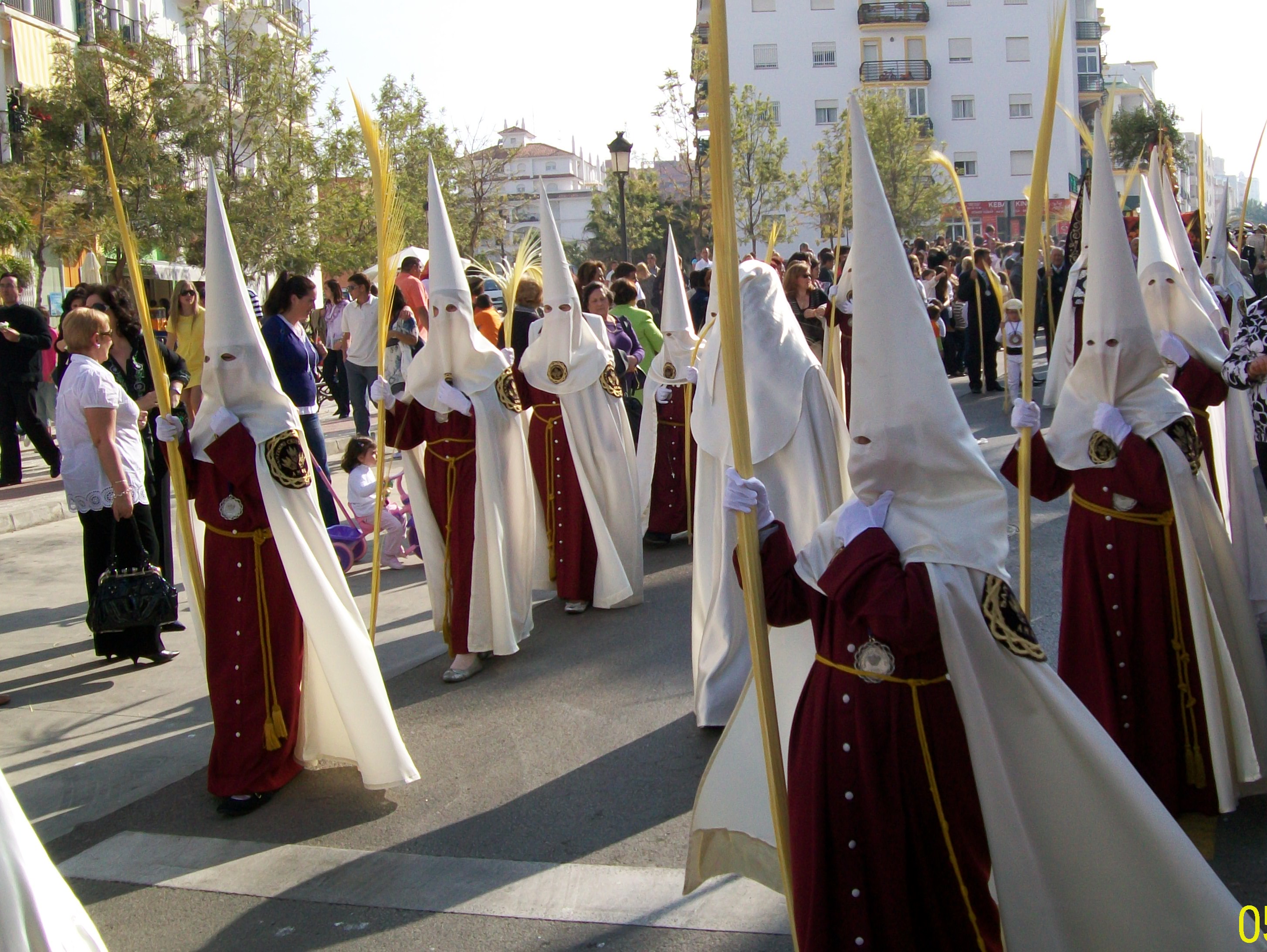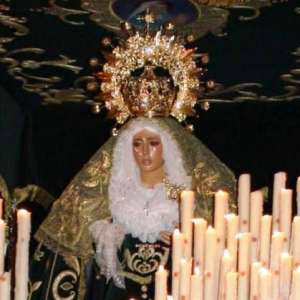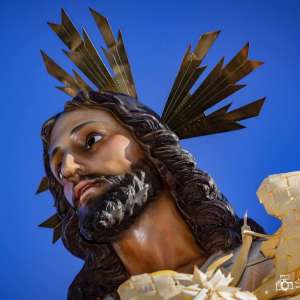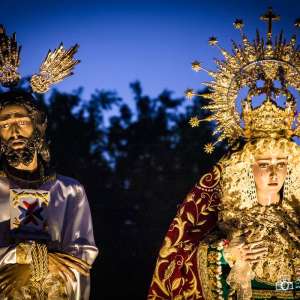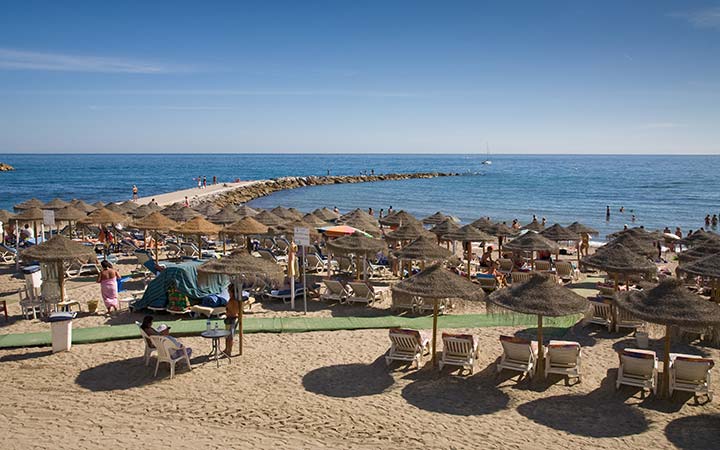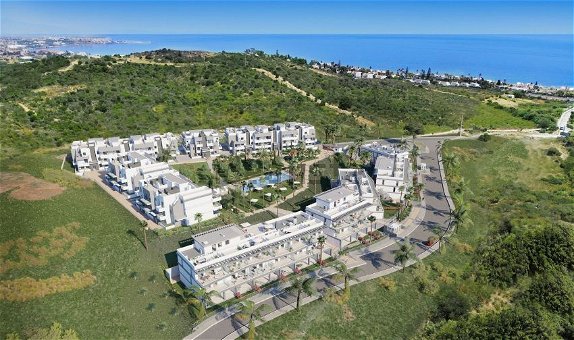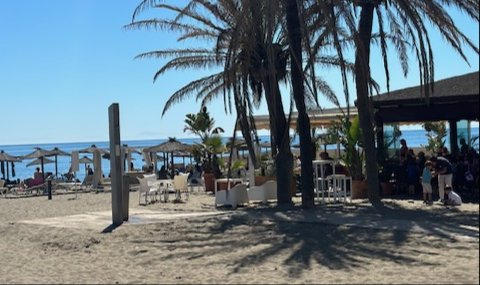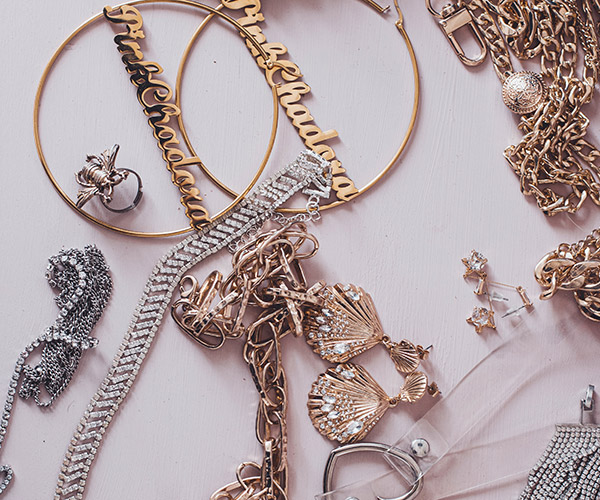Semana Santa in Estepona
The Hermandades, or Brotherhoods, organise the Holy Week processions. You can get a leaflet with routes, days and times from the Tourist Office in the Plaza de las Flores.
The Hermandades are religious organisations, but their activities are also charitable, social, cultural and musical. They provide the mainstream celebrations in Estepona with their Pilgrimages and Processions for Holy Week and other Holy Days.
Estepona is special because it has two different types of floats in the processions.
Estepona used to be a poor town, so the Hermandades bought second-hand floats to carry their Holy Statues. Some of them bought from Malaga, the Tronos with long exterior poles, and the bearers outside.
Others bought second-hand Pasos from Seville, where the bearers, the Costaleros, are in the dark, underneath the float, carrying the weight – sometimes a ton or more – on the back of their necks.
They wear special cloths wrapped round their heads with a pad at the back of the neck where the wooden structure rests, and a long piece of material going down their back to catch their sweat. This is a much more onerous task for them, and there are relief teams throughout the processions. There is a statue of two Costaleros at the beginning of the Calle Real, by the little square with a long fountain, the Plaza Almengaul.
Each procession is organised by a Hermandad. People usually belong to the one their parents belong to. You pay a monthly subscription which covers the enormous cost of the processions – just imagine how much those candles cost, and the flowers, to say nothing of the cost of occasional replacing of the velvet capes and the dresses embroidered with real gold thread.
The procession starts with a Standard-bearer from the Hermandad, someone carrying a cross, the parish priest, probably the Chief of Police and a few other dignitaries.
They are followed by the Nazarenos or Penitentes – the ones that you most associate with these processions.
These are dressed in satin tunics, different colours for each procession, with girdles, the Hermandad badge, and a hood – either pointed or floppy – that covers their face.
You may also see Promesas – people who made a vow that they would walk in the procession in exchange for God answering their prayer. These people walk barefoot (for 5 hours!) or carrying a pretty heavy cross, signifying their gratitude for favours received. One year there were two who were walking backwards!
There are also Mantillas, female members of the Hermandad who are the official mourners for the death of Christ. Dressed from head to high-heeled toe in black, with silver jewellery, they wear the high combs and black lace mantillas of tradition.
Oh and bands. If there are two, they play different tunes and are generally in competition. :-)
But of course the main elements of the processions are the floats – the Pasos or Tronos.
There are at least two, with Christ at the front and the Virgin at the back. The Virgin’s float is much larger and more elaborate, and has a canopy.
At the front of both floats is a bell or a knocker, which the Float Leader – a chap in a smart suit wearing the emblem of the Hermandad – uses to give instructions to the bearers. He will ring the bell or give a sharp knock to tell them to turn a corner, to put the float down for a rest, or when it’s time to lift it up and start off again. When they lift it up they get applause from the watchers – including you, so be ready!
Other occasions when you need to clap is when they do a “subida a pulso” – lifting the poles up high on their outstretched arms, like a set of dumbbells, or the swaying dance that the pasos do from time to time.
The Costaleros are underneath in the dark, so they have to practice these movements a lot beforehand. Some lighter floats are carried solely by women bearers; there are also a few Costaleras – strong young women - among the males under the pasos. You may be lucky enough to hear a Saeta, a spontaneous song to the Virgin, sung by a bystander in flamenco style. Try and see an Encuentro, it means meeting, and the two statues – Christ and Virgin – meet and greet. They dance, rocking from side to side, moving back and forward, bowing to each other. All this while the bearers hold an enormous weight.
Another special thing here in Esteponas is the children's procession - the Hermandad Infantil.Aged from 11-16, the youngsters carry a smaller and lighter Trono on a shorter route. All the Mums and Grannies are out with thei phones to take photos and videos!
Unmissable!

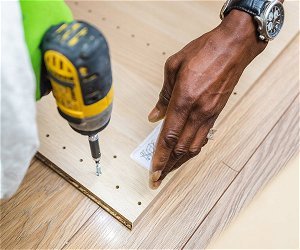





 My name's Alex and this is my website all about Estepona in Spain. Register now for free to talk about Fiestas, Semana Santa, parades and tapas trails in Estepona and much more!
My name's Alex and this is my website all about Estepona in Spain. Register now for free to talk about Fiestas, Semana Santa, parades and tapas trails in Estepona and much more!
